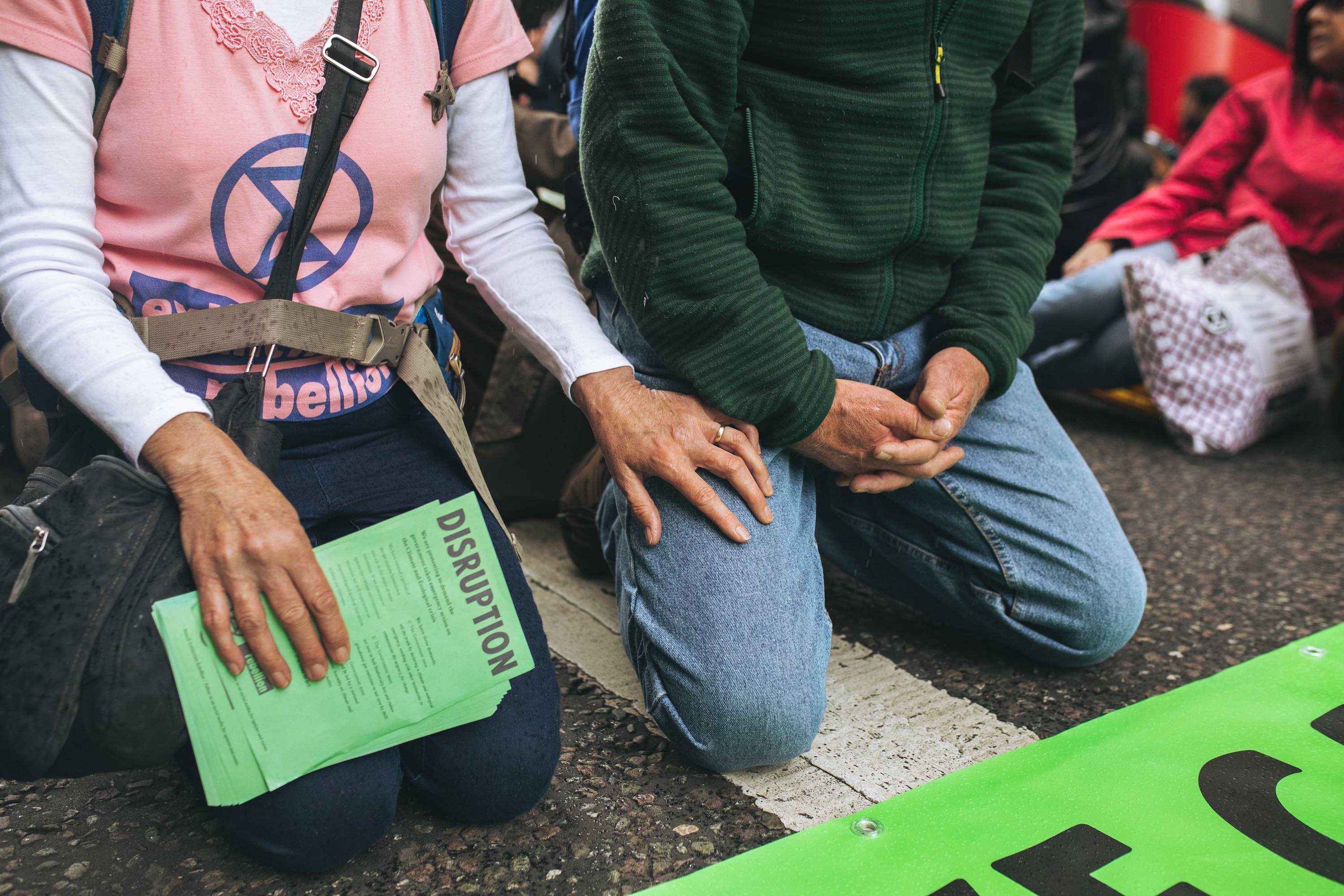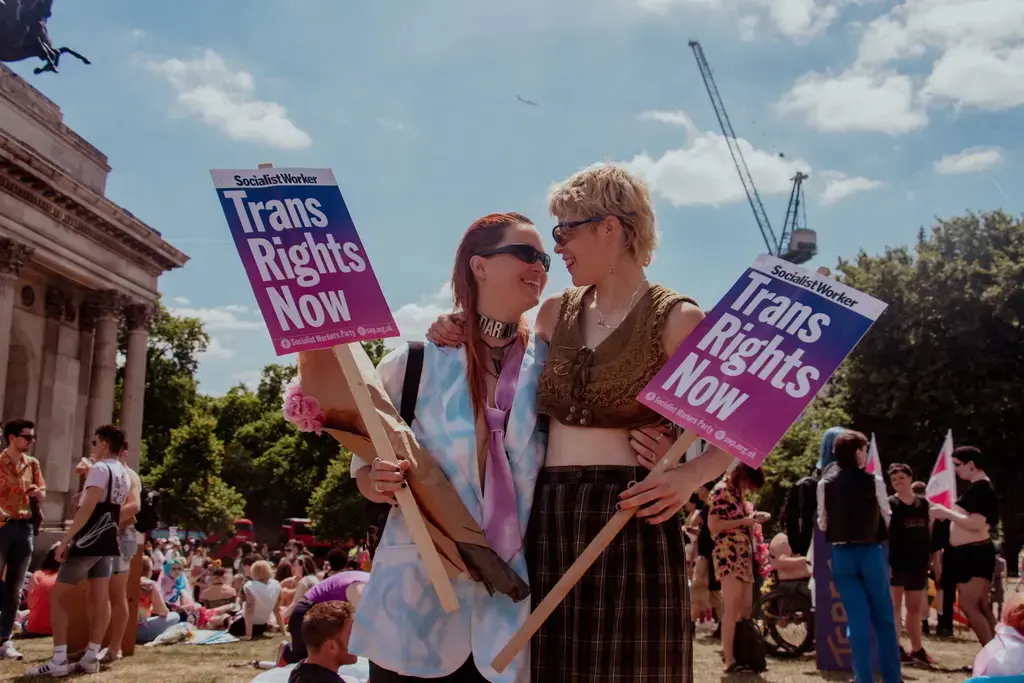So what comes next for Extinction Rebellion?
- Text by Ben Smoke
- Photography by Theo McInnes

Today, 11 days after it began, Extinction Rebellion (XR)’s first stage of action on climate change came to an end. The group, launched last November, began their ‘international rebellion’ last Monday at London’s Marble arch. In the following days, over 1,000 people were arrested in actions that saw key parts of the city targeted, including Waterloo Bridge, Oxford Circus and Canary Wharf.
The actions had three key aims: to get the government to tell the truth on climate change, to bring greenhouse net emissions to zero by 2025, and to create a citizen’s assembly on ecological and climate justice. In the run up to the launch, much of the rhetoric around the use of mass arrests prompted concern from activists across the movement – myself included.
As the dust settles, now is the time to take stock – to look at what the movement achieved, whether the concerns of people like me were founded, and where XR can go next.
Extinction Rebellion are the largest set of climate protest and actions in the UK in a decade. At one point, camps and occupations were in place at Parliament Square, Marble Arch, Oxford Circus and Waterloo Bridge (each represent a key point in the city’s overly congested travel network). The reclamation of a space normally reserved for polluting vehicles was undoubtedly one of the most valuable material elements of the action. Instead of the usual cloud of exhaust fumes, there were trees, plants and space for workshops on Waterloo bridge, and a set of solar panels at Marble arch. It’s one thing to imagine what the busiest parts of our city could be like without cars, but to see it in action was something else altogether.
The XR occupations gave us the opportunity to radically reimagine what our cities could look and feel like if we weren’t beholden to vehicles, and that was just the beginning.

Since the infamous pink boat moved into place in Oxford circus, XR hasn’t been far from the front pages. In doing so, it placed climate change at the heart of the conversation in a way that it has rarely been up until now. Actions at the Shell building, Canary Wharf and the London Stock Exchange centred that conversation on the biggest offenders in greenhouse emissions.
Earlier this week, Swedish teenager Greta Thunberg, who started a climate strike outside the Swedish Parliament last summer, spoke in Westminster, calling out MP’s for their ‘irresponsible’ lack of action on climate change and Britain’s ‘creative’ accounting where carbon emissions were concerned. In the aftermath, environment secretary Michael Gove admitted that much more must be done, and agreed to meet with XR activists.
It is without argument, that there has been an effectiveness to XR’s relentless tactics – the bringing of a government minister to the negotiating table being a testament to that – but underneath this sheen of (potentially) superficial success, there are still big questions to be answered.
In the week and a half since actions started, there have been a number of controversies involving XR comms and activists, particularly surrounding interactions with the metropolitan police.
On Wednesday last week, XR tweeted a video of an activist talking about having a chat with the police whilst in custody – something which protest law experts repeatedly warn against. Elsewhere, a video emerged of XR activists saying ‘we love you’ to hordes of the police as they marched into a throng of protestors on Waterloo Bridge. More worryingly, reports of XR activists calling the police on two young people of colour surfaced. The two were accused of pickpocketing, and once searched by the police – who found nothing – were then subjected to immigration checks.
 Incidents like this in their isolation are, at best, unfortunate, and can be put down to the inherent messiness of a rapidly expanding movement: one that jumped from hundreds to thousands of activists in a matter of hours. The worry, however, is that they belay something more troubling underneath.
Incidents like this in their isolation are, at best, unfortunate, and can be put down to the inherent messiness of a rapidly expanding movement: one that jumped from hundreds to thousands of activists in a matter of hours. The worry, however, is that they belay something more troubling underneath.
In the last 30 years there have been 1705 deaths in police custody. Most of those have been people of colour. The environmental movement has, historically, been incredibly white, with a lack of diversity being one of the key accusations levelled at XR. At a time when black people are 4.3 per cent more likely to be stopped and searched by the police than white people – and BAME people make up 25 per cent of the prison population, despite representing just 14 per cent of the population – the messages of cooperation and geniality with the police strike a deaf tone.
The infiltration of environmental groups by undercover officers – particularly those who formed sexual relationships with activists, have left scars on the movement – and rightly so. That lessons around the lengths the state will go to to quell environmental activism appear to be easily forgotten or ignored, which is a bitter pill for many to swallow.
As arrested activists move from custody to courtroom, questions remain about XR’s tactics and capacity to support those facing charges, as three activist remain held on remand. Behind closed doors, those involved in the legal cases have called it ‘chaos’.
The reality, though, is that XR has been wildly more successful than any of us could have ever dared to dream. That there are issues is perhaps indicative of this. Will Mccallum, ocean lead at Greenpeace wrote on Twitter: ‘Is this what social movements are like? messy, emotional, inspiring..’ – and perhaps he’s right. For those of sitting on the sidelines, still unsure, perhaps it is time to engage. To empower and embolden the movement with our shared wisdom, to learn from the energy, the ideas and the excitement of those involved; to work together to make a more perfect movement, and a better world.







Follow Ben Smoke on Twitter.
Enjoyed this article? Like Huck on Facebook or follow us on Twitter.
You might like

A new book explores Tupac’s revolutionary politics and activism
Words For My Comrades — Penned by Dean Van Nguyen, the cultural history encompasses interviews with those who knew the rapper well, while exploring his parents’ anti-capitalist influence.
Written by: Isaac Muk

The UK is now second-worst country for LGBTQ+ rights in western Europe
Rainbow regression — It’s according to new rankings in the 2025 Rainbow Europe Map and Index, which saw the country plummet to 45th out of 49 surveyed nations for laws relating to the recognition of gender identity.
Written by: Ella Glossop

James Massiah: “As much as the social contract is lost, there’s a freedom with that”
Bounty Law — With the release of his latest album, we sat down with the rapper-poet to chat about his new sonic Western, the boom in alternative poetry events, and whether the social contract is broken.
Written by: Isaac Muk

Bernie Sanders introduces Clairo at Coachella, urging young Americans to “stand up for justice”
Coachella charmed — The Vermont Senator praised the singer-songwriter for her efforts in raising awareness of women’s rights issues and Gaza.
Written by: Isaac Muk

Plestia Alaqad: “Journalists should focus on humanising people”
Huck’s April interview — Having become one of the most crucial and followed voices from inside Gaza in the aftermath of October 7, the award-winning author and journalist is releasing a new memoir, ‘The Eyes of Gaza’, collating diary entries made over the past 18 months. We caught up with her to hear more about it.
Written by: Isaac Muk

Jack Johnson
Letting It All Out — Jack Johnson’s latest record, Sleep Through The Static, is more powerful and thought provoking than his entire back catalogue put together. At its core, two themes stand out: war and the environment. HUCK pays a visit to Jack’s solar-powered Casa Verde, in Los Angeles, to speak about his new album, climate change, politics, family and the beauty of doing things your own way.
Written by: Tim Donnelly